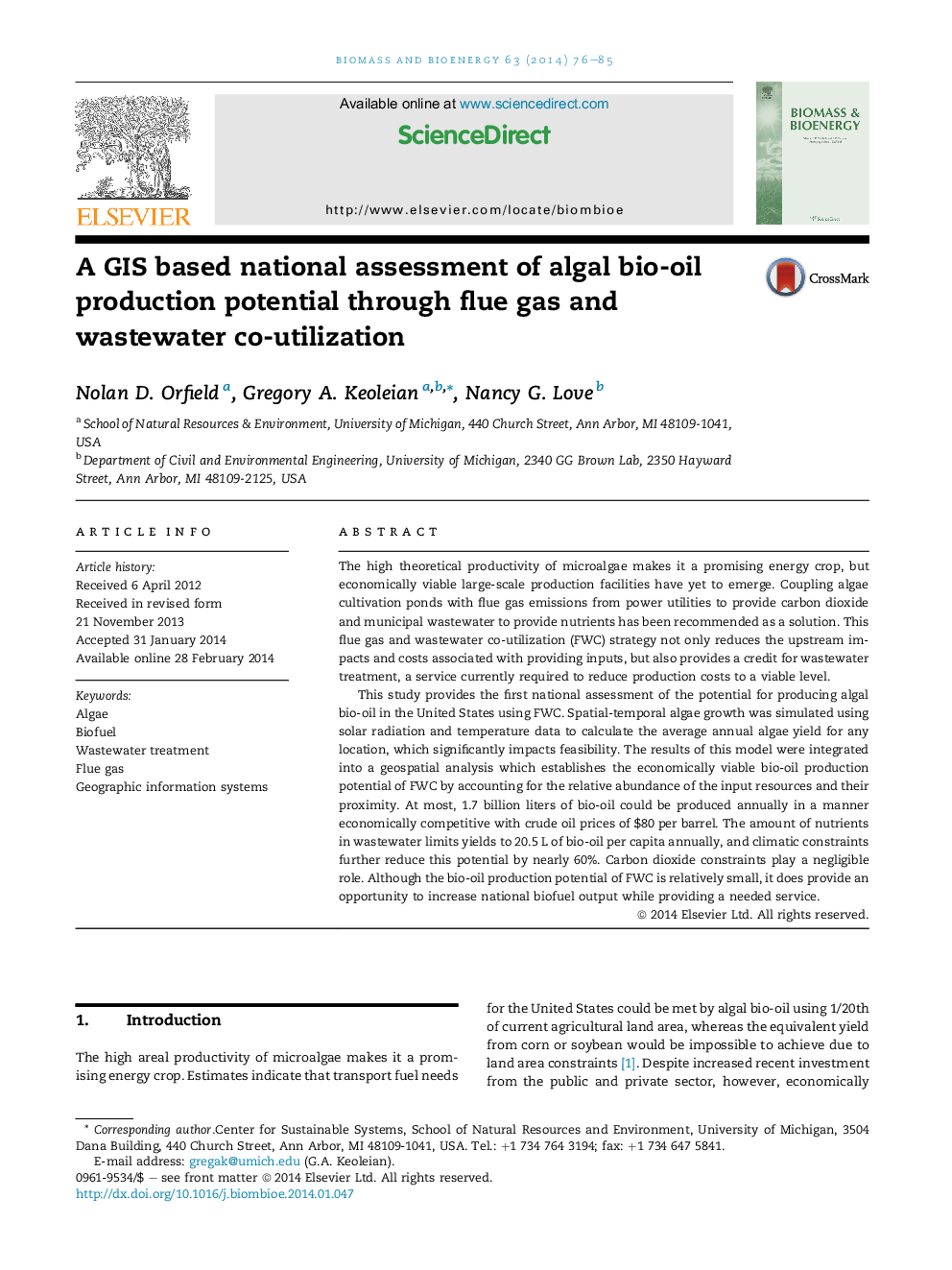| کد مقاله | کد نشریه | سال انتشار | مقاله انگلیسی | نسخه تمام متن |
|---|---|---|---|---|
| 676914 | 1459830 | 2014 | 10 صفحه PDF | دانلود رایگان |

• Spatial-temporal algae growth was simulated using historical climate data.
• A geospatial overlay analysis was used to assess national production potential.
• Nutrient availability in wastewater is most limiting.
• At most, 1.7 billion liters of algal biofuel per year could be produced.
The high theoretical productivity of microalgae makes it a promising energy crop, but economically viable large-scale production facilities have yet to emerge. Coupling algae cultivation ponds with flue gas emissions from power utilities to provide carbon dioxide and municipal wastewater to provide nutrients has been recommended as a solution. This flue gas and wastewater co-utilization (FWC) strategy not only reduces the upstream impacts and costs associated with providing inputs, but also provides a credit for wastewater treatment, a service currently required to reduce production costs to a viable level.This study provides the first national assessment of the potential for producing algal bio-oil in the United States using FWC. Spatial-temporal algae growth was simulated using solar radiation and temperature data to calculate the average annual algae yield for any location, which significantly impacts feasibility. The results of this model were integrated into a geospatial analysis which establishes the economically viable bio-oil production potential of FWC by accounting for the relative abundance of the input resources and their proximity. At most, 1.7 billion liters of bio-oil could be produced annually in a manner economically competitive with crude oil prices of $80 per barrel. The amount of nutrients in wastewater limits yields to 20.5 L of bio-oil per capita annually, and climatic constraints further reduce this potential by nearly 60%. Carbon dioxide constraints play a negligible role. Although the bio-oil production potential of FWC is relatively small, it does provide an opportunity to increase national biofuel output while providing a needed service.
Journal: Biomass and Bioenergy - Volume 63, April 2014, Pages 76–85